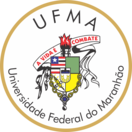| Compartilhamento |


|
Use este identificador para citar ou linkar para este item:
https://tedebc.ufma.br/jspui/handle/tede/6236Registro completo de metadados
| Campo DC | Valor | Idioma |
|---|---|---|
| dc.creator | MENEZES, Brenda dos Santos | - |
| dc.creator.Lattes | https://lattes.cnpq.br/1332241472856198 | por |
| dc.contributor.advisor1 | FREITAS, Flávio Luiz de Castro | - |
| dc.contributor.advisor1Lattes | http://lattes.cnpq.br/2128304906555701 | por |
| dc.contributor.referee1 | FREITAS, Flávio Luiz de Castro | - |
| dc.contributor.referee1Lattes | http://lattes.cnpq.br/2128304906555701 | por |
| dc.contributor.referee2 | OLIVEIRA, Ana Caroline Amorim | - |
| dc.contributor.referee2Lattes | http://lattes.cnpq.br/6279006668275644 | por |
| dc.contributor.referee3 | XAVIER, Monalisa Pontes | - |
| dc.contributor.referee3Lattes | http://lattes.cnpq.br/8498770751178590 | por |
| dc.date.accessioned | 2025-06-10T17:30:01Z | - |
| dc.date.issued | 2025-01-30 | - |
| dc.identifier.citation | MENEZES, Brenda dos Santos. Cartografia de um Devir: sussurros nômades “Com” uma pregoeira de rua em São Luís do Maranhão. 2025.2023 f. Dissertação (Programa de Pós-Graduação em Cultura e Sociedade/CCH) - Universidade Federal do Maranhão, São LUís, 2025. | por |
| dc.identifier.uri | https://tedebc.ufma.br/jspui/handle/tede/6236 | - |
| dc.description.resumo | O presente trabalho, de natureza interdisciplinar e qualitativa, utiliza o método cartográfico para explicitar o devir-pregoeira de Dona Corina, uma pregoeira de rua em São Luís do Maranhão. A pesquisa problematiza: “Em que consiste o devir-pregoeira para Dona Corina?”. Propõe-se que os fluxos entre a experiência da pesquisadora e a prática da pregoeira agenciem um território existencial, mobilizando memórias, afetos e narrativas que escapam a uma compreensão linear. A fundamentação teórica é baseada em conceitos como cartografia, devir, ecosofia e territórios existenciais, conforme desenvolvidos por Félix Guattari e Gilles Deleuze, com destaque para as obras O Inconsciente Maquínico (1979), As Três Ecologias (1989), Caosmose (1992), Bergsonismo (1968), Diálogos (1980, Mil Platôs: Capitalismo e Esquizofrenia (1980) e Proust e os Signos (1964). São apresentados os trajetos metodológicos que sustentam a pesquisa, abordando os caminhos teórico-práticos que estruturam sua construção. Nesse contexto, são discutidos os conceitos fundamentais para a análise do objeto de estudo. Em seguida revisa-se a literatura e a história da arte relacionadas aos pregoeiros de rua em São Luís, além de oferecer uma análise interdisciplinar e transversal do material obtido. Por fim, analisa-se cartograficamente as entrevistas colhidas durante o trabalho de campo, centrando-se nas narrativas de Dona Corina e seus familiares. A partir da descrição de sua prática como vendedora de pirulitos, busca-se problematizar o significado do ser-pregoeiro e os excessos vitais presentes em suas memórias. A pesquisa é realizada na cidade de São Luís, evidenciando a interação entre pesquisadora, pregoeira e espaço urbano. Os métodos utilizados incluem pesquisa bibliográfica, documental e de campo. Constatou-se que o devir-pregoeira de Dona Corina é um paradoxo constitutivo de sua existência: ele permeia toda a sua vida, configurando se como um movimento entre ser e não ser pregoeira. Esse paradoxo evidencia a potência de uma vida que não se restringe às codificações habituais, mas que se torna território de constante reinvenção. | por |
| dc.description.abstract | This interdisciplinary and qualitative study employs the cartographic method to elucidate the devenir-pregoeira of Dona Corina, a street crier in São Luís do Maranhão. The research problematizes the question: “What does the devenir-pregoeira mean for Dona Corina?”. It proposes that the flows between the researcher’s experience and the crier’s practice create an existential territory, mobilizing memories, affections, and narratives that escape a linear understanding. The theoretical foundation is based on concepts such as cartography, devenir, ecosophy, and existential territories, as developed by Félix Guattari and Gilles Deleuze, with emphasis on works including The Machinic Unconscious (1979), The Three Ecologies (1989), Chaosmosis (1992), Bergsonism (1968), Dialogues (1980), A Thousand Plateaus: Capitalism and Schizophrenia (1980), and Proust and Signs (1964). The study presents the methodological paths that sustain the research, addressing the theoretical-practical frameworks that structure its development. Within this context, fundamental concepts for analyzing the object of study are discussed. Subsequently, the research reviews the literature and the history of art related to street criers in São Luís, offering an interdisciplinary and transversal analysis of the collected material. Finally, a cartographic analysis of the interviews conducted during fieldwork focuses on the narratives of Dona Corina and her family members. Through the description of her practice as a lollipop vendor, the study seeks to problematize the meaning of being a crier and the vital excesses present in her memories. The research takes place in São Luís, highlighting the interaction between the researcher, the crier, and urban space. The methods employed include bibliographic, documentary, and field research. The findings indicate that Dona Corina’s devenir-pregoeira constitutes a paradox within her existence: it permeates her entire life, manifesting as a movement between being and not being a crier. This paradox reveals the potency of a life that transcends conventional codifications, becoming a territory of continuous reinvention. | eng |
| dc.description.abstract | This interdisciplinary and qualitative study employs the cartographic method to elucidate the devenir-pregoeira of Dona Corina, a street crier in São Luís do Maranhão. The research problematizes the question: “What does the devenir-pregoeira mean for Dona Corina?”. It proposes that the flows between the researcher’s experience and the crier’s practice create an existential territory, mobilizing memories, affections, and narratives that escape a linear understanding. The theoretical foundation is based on concepts such as cartography, devenir, ecosophy, and existential territories, as developed by Félix Guattari and Gilles Deleuze, with emphasis on works including The Machinic Unconscious (1979), The Three Ecologies (1989), Chaosmosis (1992), Bergsonism (1968), Dialogues (1980), A Thousand Plateaus: Capitalism and Schizophrenia (1980), and Proust and Signs (1964). The study presents the methodological paths that sustain the research, addressing the theoretical-practical frameworks that structure its development. Within this context, fundamental concepts for analyzing the object of study are discussed. Subsequently, the research reviews the literature and the history of art related to street criers in São Luís, offering an interdisciplinary and transversal analysis of the collected material. Finally, a cartographic analysis of the interviews conducted during fieldwork focuses on the narratives of Dona Corina and her family members. Through the description of her practice as a lollipop vendor, the study seeks to problematize the meaning of being a crier and the vital excesses present in her memories. The research takes place in São Luís, highlighting the interaction between the researcher, the crier, and urban space. The methods employed include bibliographic, documentary, and field research. The findings indicate that Dona Corina’s devenir-pregoeira constitutes a paradox within her existence: it permeates her entire life, manifesting as a movement between being and not being a crier. This paradox reveals the potency of a life that transcends conventional codifications, becoming a territory of continuous reinvention. | fra |
| dc.description.provenance | Submitted by Daniella Santos (daniella.santos@ufma.br) on 2025-06-10T17:30:01Z No. of bitstreams: 1 Brenda_dos_Santos_Menezes.pdf: 4619601 bytes, checksum: 4f1db73e4fc7ee074bc036c4df591e2e (MD5) | eng |
| dc.description.provenance | Made available in DSpace on 2025-06-10T17:30:01Z (GMT). No. of bitstreams: 1 Brenda_dos_Santos_Menezes.pdf: 4619601 bytes, checksum: 4f1db73e4fc7ee074bc036c4df591e2e (MD5) Previous issue date: 2025-01-30 | eng |
| dc.description.sponsorship | CAPES | por |
| dc.format | application/pdf | * |
| dc.language | por | por |
| dc.publisher | Universidade Federal do Maranhão | por |
| dc.publisher.department | DEPARTAMENTO DE FILOSOFIA/CCH | por |
| dc.publisher.country | Brasil | por |
| dc.publisher.initials | UFMA | por |
| dc.publisher.program | PROGRAMA DE PÓS-GRADUAÇÃO EM CULTURA E SOCIEDADE/CCH | por |
| dc.rights | Acesso Aberto | por |
| dc.subject | Deleuze-Guattari; | por |
| dc.subject | interdisciplinaridade; | por |
| dc.subject | pregoeira de rua; | por |
| dc.subject | São Luís; | por |
| dc.subject | territórios existenciais. | por |
| dc.subject | here is the translation; | eng |
| dc.subject | Deleuze-Guattari; | eng |
| dc.subject | iInterdisciplinarity; | eng |
| dc.subject | street vendor; | eng |
| dc.subject | São Luís; | eng |
| dc.subject | existential territories; | eng |
| dc.subject | Deleuze-Guattari; | fra |
| dc.subject | interdisciplinarité; | fra |
| dc.subject | Vendeuse de Rue; | fra |
| dc.subject | São Luís; | fra |
| dc.subject | territoires existentielles. | fra |
| dc.subject.cnpq | Sociologia Urbana | por |
| dc.title | Cartografia de um Devir: sussurros nômades “Com” uma pregoeira de rua em São Luís do Maranhão | por |
| dc.title.alternative | Cartography of a Becoming: nomadic suggestions “With” a street auctioneer in São Luís do Maranhão | eng |
| dc.title.alternative | Cartographier un devenir : suggestions nomades « Avec » un commissaire-priseur de rue à São Luís do Maranhão | fra |
| dc.type | Dissertação | por |
| Aparece nas coleções: | DISSERTAÇÃO DE MESTRADO - PROGRAMA DE PÓS-GRADUAÇÃO EM CULTURA E SOCIEDADE (PGCULT) MESTRADO INTERDISCIPLINAR | |
Arquivos associados a este item:
| Arquivo | Descrição | Tamanho | Formato | |
|---|---|---|---|---|
| Brenda_dos_Santos_Menezes.pdf | Dissertação de Mestrado | 4,51 MB | Adobe PDF | Baixar/Abrir Pré-Visualizar |
Os itens no repositório estão protegidos por copyright, com todos os direitos reservados, salvo quando é indicado o contrário.




